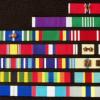Hello,
I am having a hard time finding guidance on some zoning questions I have with respect to SQF.
I have multiple facilities. 1st processing facility is a raw facility where ingredients are received, processed and sent to a third party for tempering. Once the tempering is complete, the product is sent to a different facility (ours) where it is formed and packaged (all raw, but frozen). A portion of this frozen product is placed into WIP, after forming, and sent to yet another facility (ours) where it goes through further processing (frozen, raw to a low moisture product).
My question: Can I zone my first facility as "RED", on a map, because it is processed from frozen raw to ground raw? "Blue" for the frozen raw to packaged facility, and "Yellow" for the low moisture facility? Or would I have to color zone red, blue and yellow for each facility? Basically, my ops team thinks that all three facilities (while being separate from each other (as is miles apart from each other)) should be categorized as though it is one whole facility. I am just unsure if I can zone in this manner.
Thanks in advance for any help.
-K


















